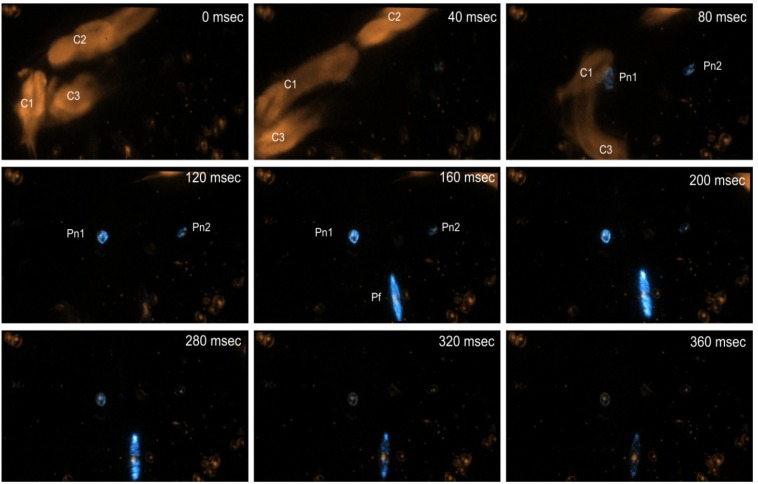Figure 3.
Image sequence from a video of bioluminescent dinoflagellates flashing in response to stimulation by copepods. The time from the beginning of the image sequence is indicated on each frame. Three copepods (C1–C3) collide and rapidly swim away from each other. During these fast swimming bursts, the dinoflagellates are stimulated to bioluminesce, although it is not possible to discern whether this is due to the copepod swimming current or to direct contact. Bioluminescence is seen to develop and diminish in the scintillons of two cells of Pyrocystis noctiluca (Pn) and a Pyrocystis fusiformis (Pf), which is pulled into the field of view at 160 ms by the copepod swimming current. The video was filmed by Ammonite Films at the National Oceanography Centre—Southampton. Filming was done under an inverted microscope at 10× magnification. The outline was captured using infrared light and bioluminescence was captured by a blue sensitive camera.

